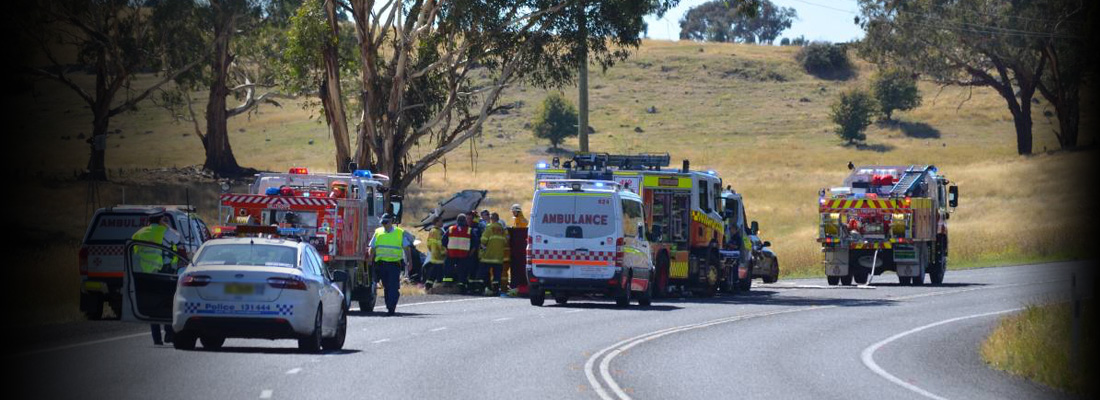

| PREVIOUS | HOME | NEXT |
Both crash drivers negligent: judge By John Reynolds, KT Journalism A Queensland Supreme court judge has blamed two drivers equally for an early morning accident on an empty stretch of highway, saying both were self-serving and lacked credibility and reliability when giving evidence. He said there was no difference between each driver's actions. Both had "departed to a substantial degree from the standard of care required of a reasonable driver in the circumstances" and both were guilty of contributory negligence. "[They] contributed fairly equally in causing the collision and the injuries which resulted from it," Justice Applegarth said. The court was told jockey Paul Michael Randall and milk truck driver Joshua John Smith were driving west on the Gore Highway near Westbrook, west of Toowoomba, on 21 January 2013 when the accident happened about 5am. Randall, in the utility, was driving to work at a horse stud before dawn when he slowed to turn right into the property. He said he had his indicator on and turned across the highway into the driveway when Smith's truck passed at speed on his right and hit his vehicle. Smith said he had seen Randall's tail lights some distance away and was following him along the highway, slowly closing the distance between them. But he did not realise Smith had slowed almost to a complete stop until his headlights illuminated the rear of the vehicle when he was about 100 metres away. He told the court he saw no indicators but believed the ute might have been turning left into a side street. He said he opted to pass on the utility's right rather than stop because he was travelling at 80kmh and didn't want to dislodge his load. Smith said he activated his truck's horn before overtaking the almost stationary utility, although Randall denied hearing it. Smith sued Randall for not paying attention, making an unsafe right-hand turn, failing to indicate and driving while intoxicated. Randall sued Smith for not keeping a proper lookout, not slowing and giving way, driving at excessive speed and failing to steer or brake to avoid a collision. Suncorp, as CTP insurer for both vehicles, had agreed on damages but both men disputed who caused the accident. Justice Applegarth said it was difficult to know exactly what occurred because both men's evidence in court contradicted statements they gave police immediately after the accident. In some cases, they also contradicted their own evidence under cross examination. In trying to justify their actions in court, Justice Applegarth said Randall was "completely unconvincing" and "unimpressive" and Smith's evidence was "unconvincing", "inconsistent" and "self-serving". "Randall was a particularly unimpressive witness, both in his purported recollection of the accident and in his exaggerated claims about its consequences," he said. He was convinced each driver was guilty of the negligence claims against them by the other. Smith, as driver of the vehicle following, was in a better position to observe the other, and perhaps take remedial action, such as slowing or stopping behind the stationary car. "There is no satisfactory evidence he could not [have stopped], or that doing so would have caused his load to shift in a manner which created a danger," Justice Applegarth said. "He should have rapidly decelerated when he realised the utility was moving to the centre line of the road and he was gaining on it." "Even if he was about 100 metres away from the utility when he realised there was a problem, he had sufficient time to slow his truck by braking without undertaking a dangerous braking procedure." Justice Applegarth said Smith's actions did not clear Randall from blame, particularly the fact he was still intoxicated from a heavy drinking session the night before. "The influence of alcohol contributed to [Smith's] failure to indicate an intention to turn right and his failure to drive with due care and attention, including a failure to look in a rear-view mirror when he was close to his destination and intending to turn," Justice Applegarth said. "If [Randall] looked in his rear-view mirrors at all, then it was probably only at the last second, just as he began to affect the turn, perhaps alerted by the horn which Smith sounded as he was overtaking. If Randall had looked in his mirrors earlier, he would have seen a truck approaching and closing on him. This probably would have prompted him to activate his indicator." Both men admitted driving on the road often. Smith said he was aware cars often turned off the highway into properties and Randall knew heavy trucks used the road at that time of day. "The risk of harm was foreseeable [to both], not insignificant and, in the circumstances, a reasonable person in the position of [either] driver would have taken precautions," Justice Applegarth said. Smith v Randall & anor [2016], QSC 191, 26/08/2016 |
Resolve is the official publication of the Australian Insurance Law Association and
the New Zealand Insurance Law Association.

